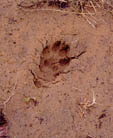After a quiet period there's been quite a bit of singing lately as the birds who nest again started getting ready. So I was determined to get out for a bit of birdwatching. I did, and saw lots, but everyone looked so big! A common yellowthroat, really? It looks the size of a finch. And gradually I realized that it's the spider eyes. I am learning to pick out spider types by GISS, pulling me into tiny world.
In the far field I saw these three. Two on milkweed, one on brown-eyed susan. One was
Misumena vatia (Goldenrod Crab Spider), but the other two?
 Goldenrod Crab Spider on Milkweed
Goldenrod Crab Spider on MilkweedOne was clearly something quite different, the other just a little different.
 A spider of another colour
A spider of another colour Not M. vatia, I think, but something related
Not M. vatia, I think, but something relatedI did some research, in part by checking out Bev's (
Burning Silo)
Crab Spider Gallery, but couldn't find a match I had any confidence in. Looking at
a recent post of Bev's, possibly the last one is
Misumenops asperatus.
Lovely spiders whoever they are.







